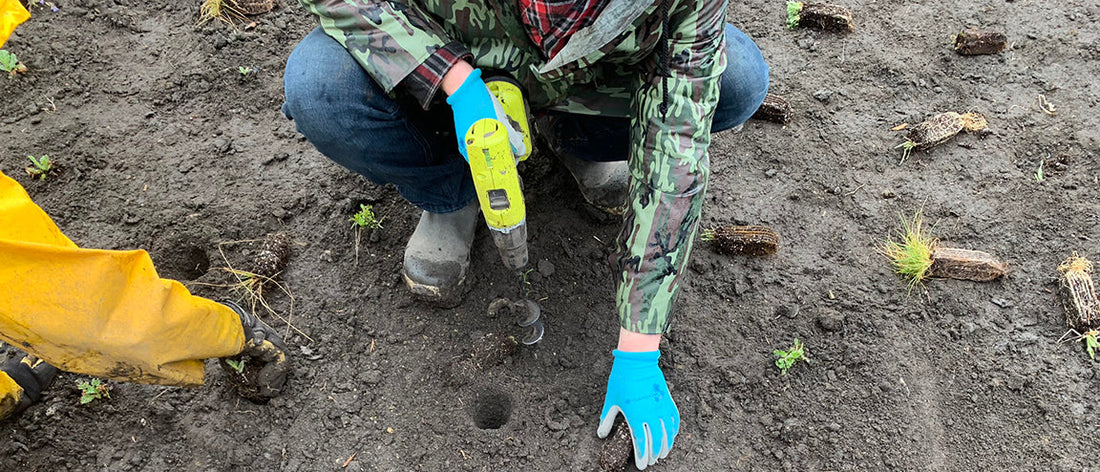
Planting Tips for Wildflower Plugs
Share
Planting native wildflower plugs is a great way to establish a garden or naturalized space more quickly than starting from seed alone. These tips will help you give your new plants the best possible start—and set them up for long-term success.
When You Receive Your Plugs
- Unpack your plants immediately if they’ve been shipped, keep them outside and placed in a sheltered spot with shade during the heat of the day until planting.
- Plant as soon as possible after receiving your plugs. The sooner they're in the ground, the better.
- Make sure the plugs are well-watered before planting.
- You can use a root-promoting fertilizer either before or after planting to support establishment—though it’s optional. Worm castings are a great natural option and can be mixed into the soil at planting time to gently boost growth.
How to Plant Wildflower Plugs
- In your prepared planting area, dig a hole just slightly larger than the root ball.
- Place the plug in the hole at the same depth it was growing in the container.
- Backfill the hole and gently firm the soil around the plug to eliminate gaps that could cause settling.
- Water deeply to settle the soil and remove air pockets.
💡 Pro tip: Apply a thin layer of mulch (no more than 1.5" deep) around each plant, but keep it away from the crown to avoid rot. Mulch helps insulate against temperature swings and drying winds, but perennials don’t tolerate as much mulch as trees or shrubs.
Planting Day Tips
- Choose an overcast day or plant in the late afternoon to avoid exposing roots to hot sun and reduce transplant shock.
- Planting many plugs? Work in pairs—one person lays out the plants while the other plants them.
- Water plugs with a root-promoting fertilizer the night before planting to encourage strong growth, especially in poor soils. Then you can use plain water during planting.
- Mark or label at least one of each variety so you can identify your plants later.
Aftercare: Helping Your Plugs Settle In
Establishment takes time and attention—especially in the first growing season.
- Keep root balls moist but not soggy while the plants are settling in.
- Water deeply and slowly. Before watering, check the soil moisture by pressing your finger into the soil—if it's dry halfway down the depth of the rootball, it's time to water.
- Continue to water as needed throughout the first year, especially in hot or dry conditions.
⚠️ Be careful not to overwater: Excess watering leads to shallow, lazy roots and weak plants. Let the top few inches of soil dry out before a slow, deep watering to encourage strong, deep root growth.
Maintenance & Winter Prep
- Hand-weed around your new wildflowers while they become established.
➤ Read more in The War on Weeds - Leave dead vegetation in fall. It insulates the crowns, offers winter shelter for insects, and provides food for birds.
- Allow seed heads to mature and disperse if you'd like natural reseeding.
- Do a late-season deep watering before freeze-up—especially in Chinook zones, where winter freeze/thaw cycles are common. A solid freeze helps protect roots from winterkill.
- In spring, clean up woody stems and larger debris to expose the new growth, but leave leaf litter behind to feed the soil and act as a natural mulch.
Grow Wild and Give Your Plugs a Strong Start!
With these tips in hand, you’ll be setting up your plugs for long-term success—and creating a healthier, more resilient space for both plants and pollinators.
